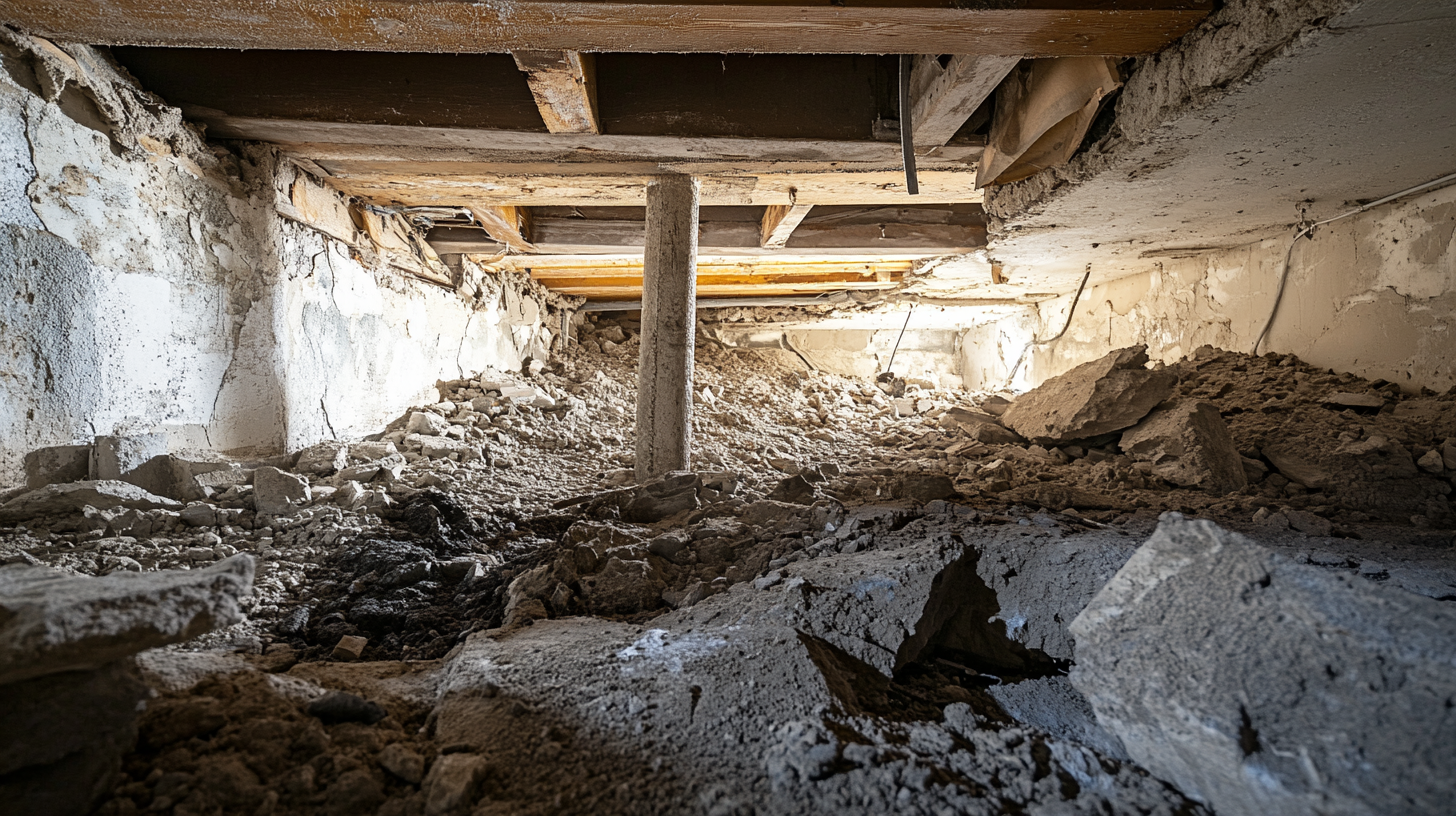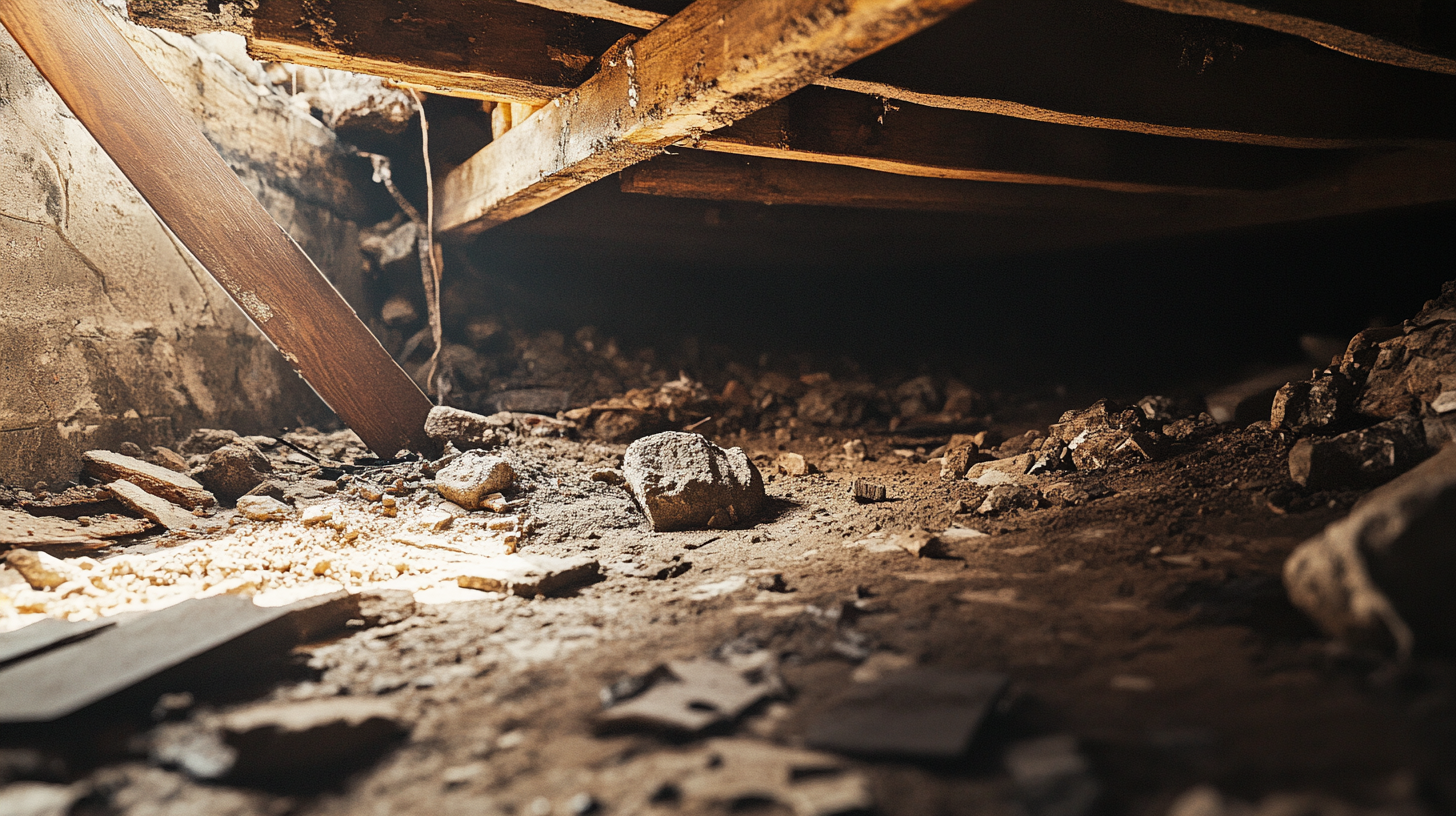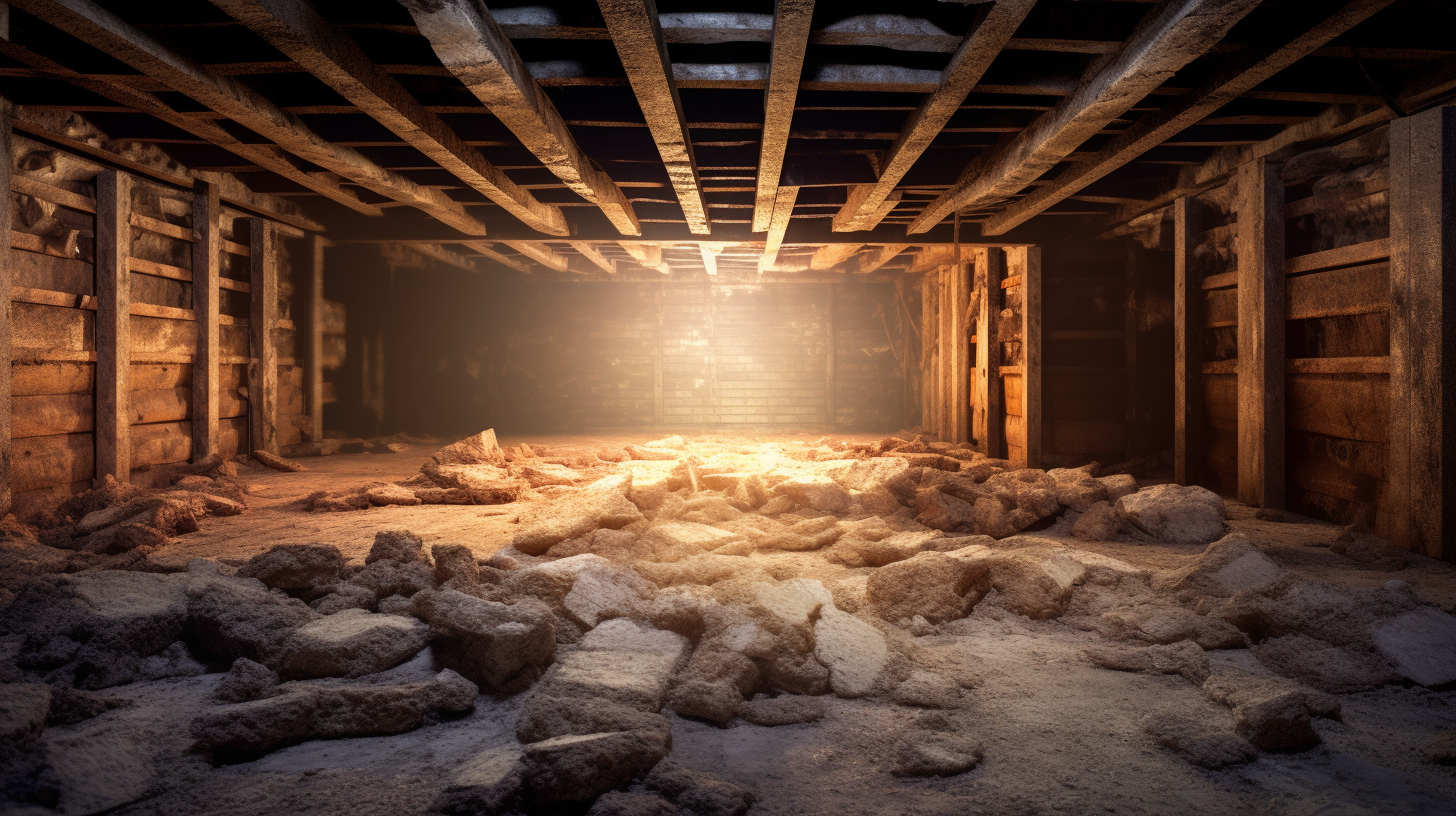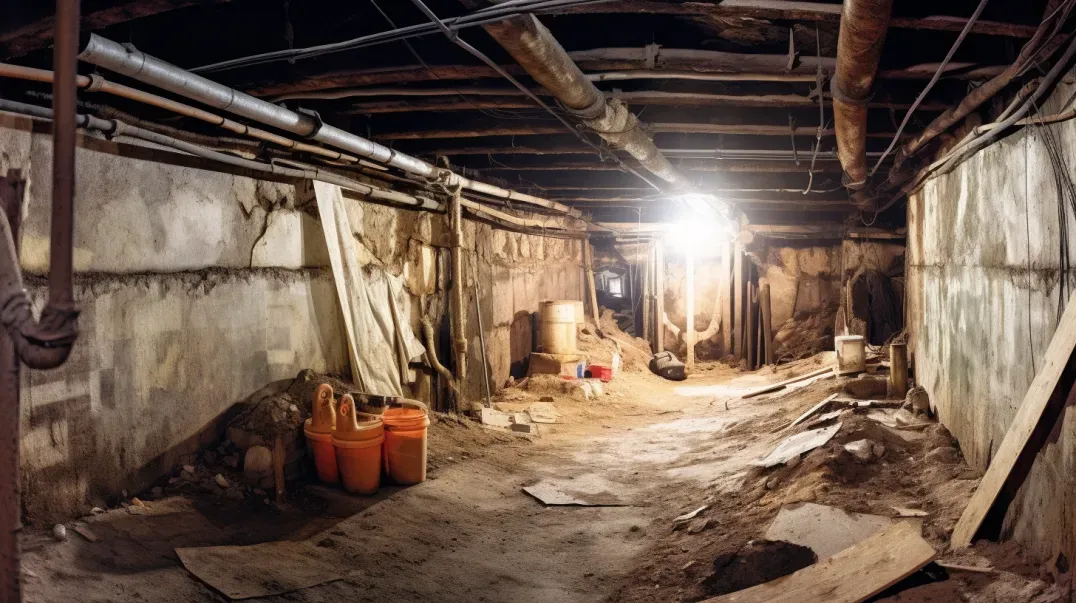Nestled out of sight beneath the floors of our homes, crawl spaces are foundational to the structural integrity and overall health of our living environments. Yet, despite their critical role, the importance of maintaining well-ventilated crawl spaces is often overlooked. Proper ventilation is not just a matter of building compliance; it's a vital practice that safeguards against moisture buildup, mold growth, and the myriad of issues that can stem from these conditions. This blog dives into the heart of crawl space ventilation, illuminating its significance and exploring the various systems designed to keep these hidden spaces dry, healthy, and free from hazards.
Crawl space ventilation plays a pivotal role in preventing the accumulation of excess moisture, which can lead to a host of problems, including structural damage, poor indoor air quality, and the unwelcome intrusion of pests. By facilitating the exchange of air, ventilation systems help to regulate humidity levels, ensuring that the underpinnings of our homes remain robust and resilient against the elements.
But not all ventilation systems are created equal. From passive venting strategies that rely on natural air flow to advanced mechanical systems equipped with fans and dehumidifiers, the choice of ventilation can significantly impact the effectiveness of moisture control in your crawl space. This blog will guide you through the different types of ventilation systems, highlighting their unique benefits and the scenarios in which they excel. Whether you're contending with high humidity levels, seeking to improve air quality, or looking to enhance energy efficiency, understanding the nuances of these systems is key to selecting the right ventilation solution for your home.
Join us as we navigate the complexities of crawl space ventilation, offering insights and practical advice to ensure your home's foundation remains strong and secure. By the end of this guide, you'll be equipped with the knowledge to make informed decisions about protecting and preserving the health of your crawl space, and by extension, your entire home.
Understanding Crawl Space Ventilation
The crawl space, often hidden and out of sight, plays a crucial role in the overall health and structural integrity of your home. Proper ventilation in this area is not just a building standard but a necessity for preventing a myriad of issues that can arise from neglect. This guide delves into the significance of crawl space ventilation, outlining its purpose and benefits, and examines the factors that homeowners should consider when selecting a ventilation system.
The Role of Ventilation in Crawl Spaces
Purpose and Benefits: The primary purpose of crawl space ventilation is to reduce moisture levels, preventing the accumulation that can lead to mold growth, wood rot, and attract pests. Moisture in a crawl space can originate from the ground, outdoor air, or even from the home above. By facilitating the exchange of air, ventilation systems help to expel damp air and replace it with drier air from the outside, maintaining a healthier environment beneath your home.
Benefits of proper crawl space ventilation include:
- Structural Integrity Preservation: By preventing wood rot and pest infestation, ventilation helps maintain the structural strength of your home.
- Improved Indoor Air Quality: Reducing moisture and mold growth in the crawl space can have a direct positive impact on the air quality throughout your home.
- Energy Efficiency: A well-ventilated crawl space can also contribute to more stable temperatures in your home, potentially reducing the workload on heating and cooling systems.
Factors Influencing Ventilation System Choice
Selecting the right ventilation system for your crawl space is influenced by several key factors:
- Climate: The climate where your home is located plays a significant role in determining the type of ventilation system needed. Homes in humid climates may require more aggressive moisture control strategies, such as mechanical ventilation or dehumidifiers, while those in drier climates might find natural ventilation sufficient.
- House Size and Crawl Space Area: The size of your home and the dimensions of the crawl space affect the capacity and type of ventilation system required to effectively manage air and moisture levels.
- Crawl Space Conditions: The presence of standing water, the type of soil, and the condition of the crawl space (e.g., encapsulated vs. open) can influence system selection. Encapsulated crawl spaces, for example, often benefit from dehumidifiers or conditioned air supply systems rather than traditional venting.
- Existing Ventilation and Insulation: The current state of ventilation and insulation in your crawl space can also dictate the need for upgrades or changes. Inadequate insulation or poorly placed vents may necessitate a different approach to ensure effective moisture control.
Types of Crawl Space Ventilation Systems
Ensuring proper ventilation in your crawl space is crucial for maintaining the structural integrity of your home, preventing moisture-related issues, and ensuring a healthy living environment. There are primarily two types of ventilation systems used in crawl spaces: natural ventilation systems and mechanical (active) ventilation systems. Each system has its unique characteristics, advantages, and considerations, making them suitable for different conditions and requirements.
Natural Ventilation Systems
Description and Benefits: Natural ventilation systems rely on the passive flow of air through vents placed around the crawl space. This type of ventilation utilizes natural forces such as wind and thermal buoyancy to circulate air, drawing fresh outdoor air in and expelling stale, moist air out. The benefits of natural ventilation include its simplicity, cost-effectiveness, and the fact that it does not require electricity to operate, making it an environmentally friendly option.
Potential Drawbacks: While natural ventilation can be effective under the right conditions, it has its limitations. It may not provide adequate air circulation in areas with high humidity levels or in regions where the outdoor air is often damp. Additionally, natural ventilation can be less effective during extreme weather conditions, such as during very hot or cold periods, potentially leading to moisture accumulation.
Ideal Conditions for Use: Natural ventilation systems are most effective in regions with moderate climates where the outdoor air is relatively dry and can help maintain a dry crawl space. They are also suitable for homes where the crawl space is not tightly enclosed, allowing for the free movement of air.
Mechanical Ventilation Systems
Overview: Mechanical (active) ventilation systems use powered fans or other mechanical devices to actively circulate air through the crawl space. These systems can be configured to either push air out of the crawl space (exhaust) or draw fresh air in (supply), and some systems combine both actions for optimal air exchange.
Advantages: Mechanical systems offer greater control over crawl space ventilation, making them effective in a wide range of climates and conditions. They can significantly reduce humidity levels, even in areas where natural ventilation is insufficient. Mechanical systems can also be equipped with humidistats or thermostats to automatically adjust their operation based on the humidity or temperature levels, providing consistent conditions within the crawl space.
Considerations for Mechanical Systems: While mechanical ventilation systems are highly effective, they do require an energy source to operate, which may increase utility costs. The initial installation can also be more complex and costly than natural ventilation systems. Additionally, regular maintenance is necessary to ensure the system operates efficiently and effectively over time.
Comparing Ventilation System Effectiveness
The effectiveness of a home's ventilation system plays a pivotal role in maintaining a healthy living environment, particularly in areas prone to moisture accumulation like crawl spaces and basements. Different ventilation systems offer varying levels of efficiency in moisture control and air quality improvement. Understanding these differences can help homeowners choose the most suitable system for their needs, ensuring their home remains dry, comfortable, and healthy.
Efficiency in Moisture Control
Natural Ventilation Systems: Natural ventilation relies on the passive movement of air through vents or openings, utilizing wind and thermal differences to circulate air. While cost-effective and energy-efficient, its effectiveness in moisture control can be limited by external humidity levels and weather conditions. In regions with moderate climates and low outdoor humidity, natural ventilation can adequately reduce moisture levels. However, in more humid climates or during extreme weather conditions, its capacity to manage moisture effectively diminishes.
Mechanical Ventilation Systems: Mechanical systems, including exhaust fans and dehumidifiers, actively remove moist air from the home and replace it with drier air from the outside or condition the air within the space. These systems offer more consistent and controllable moisture management, making them highly effective in a wide range of climates, including those with high humidity levels. The ability to precisely control humidity levels with mechanical systems often makes them a superior choice for moisture control, albeit at a higher operational cost.
Impact on Air Quality
Natural Ventilation Systems: By facilitating the exchange of indoor and outdoor air, natural ventilation can help dilute indoor pollutants and improve air quality. However, its effectiveness is highly dependent on the quality of the outdoor air; in areas with high pollution levels, natural ventilation may inadvertently introduce pollutants into the home. Additionally, without filters or air cleaning mechanisms, natural ventilation does not remove particulate matter or allergens from the air.
Mechanical Ventilation Systems: Mechanical systems can significantly improve indoor air quality by not only controlling moisture but also filtering and purifying the air as it is circulated. Systems equipped with HEPA filters or air purifiers can remove a wide range of airborne contaminants, including dust, pollen, mold spores, and other allergens, providing a cleaner breathing environment. The controlled circulation offered by mechanical systems ensures a consistent supply of fresh, clean air, regardless of outdoor air quality conditions.
Cost Analysis of Ventilation Systems
Choosing the right ventilation system for your home is a critical decision that affects not only the air quality and moisture levels in your living space but also has significant financial implications. Understanding the costs involved in installing and maintaining various ventilation systems can help homeowners make informed decisions that balance health, comfort, and budget. This guide provides a detailed cost analysis, covering both initial installation expenses and long-term maintenance and operating costs.
Initial Installation Costs
Natural Ventilation Systems: The most cost-effective option, natural ventilation systems rely on strategically placed vents and openings to facilitate air flow. Installation costs are generally low, primarily involving the cost of vents and minor construction work for their placement. Depending on the size and design, homeowners can expect to spend from a few hundred to a few thousand dollars.
Mechanical Ventilation Systems: These systems, including exhaust fans, air ducts, and HVAC integrated solutions, involve more complex installations and therefore come with higher initial costs. Prices vary widely based on the system's complexity, the size of the home, and specific needs like dehumidification. Homeowners might spend anywhere from $1,000 to over $10,000 for a comprehensive mechanical ventilation system.
Hybrid Systems: Combining elements of both natural and mechanical ventilation, hybrid systems offer a balance of cost-effectiveness and efficiency. Initial costs will be higher than natural systems but can be more affordable than fully mechanical options.
Long-Term Maintenance and Operating Costs
Natural Ventilation Systems: The long-term costs associated with natural ventilation are minimal, primarily involving occasional maintenance of vents and screens to ensure they remain clear and functional. There are no ongoing operating costs since these systems do not use electricity.
Mechanical Ventilation Systems: Mechanical systems incur higher long-term costs due to energy consumption and the need for regular maintenance. Operating costs depend on the system's size, efficiency, and local energy prices. Maintenance, including filter replacements and servicing of mechanical parts, can add several hundred dollars more each year.
Hybrid Systems: These systems offer a compromise between the low operating costs of natural ventilation and the higher efficiency of mechanical systems. Long-term costs will be lower than fully mechanical systems but higher than natural ones, depending on how frequently the mechanical components are used.
Suitability for Different Home Types
Choosing the right ventilation system for your home is crucial for maintaining a healthy living environment, preventing moisture-related issues, and ensuring the structural integrity of your property. However, the effectiveness of a ventilation system can greatly depend on the specific layout of your home, the design of your crawl space, and the climate in which you live. This guide offers tailored recommendations for selecting the most suitable ventilation system, taking into account these critical factors.
Best Systems for Various Home Layouts
Single-Level Homes with Open Crawl Spaces: For homes with a single level and open crawl spaces, natural ventilation systems can be highly effective. Strategic placement of vents around the perimeter can facilitate adequate air flow, leveraging natural wind and thermal buoyancy to control moisture levels. This option is cost-effective and suitable for homes in moderate climates.
Multi-Level Homes with Enclosed Crawl Spaces: Multi-level homes or those with enclosed crawl spaces may benefit more from mechanical ventilation systems. These systems can actively circulate air throughout complex or enclosed spaces, ensuring consistent air quality and moisture control across all levels of the home. Exhaust fans, air duct systems, or HVAC integrated solutions are recommended for these layouts.
Homes with Limited External Venting Options: In urban areas or homes with limited ability to add external vents, dehumidifiers or sealed crawl space systems with mechanical ventilation can offer a viable solution. These systems do not rely on external air flow, making them suitable for controlling the internal environment regardless of external venting limitations.
Climate Considerations
The climate in which you live plays a significant role in determining the most appropriate ventilation system for your home:
Humid Climates: In areas with high humidity, relying solely on natural ventilation may not be sufficient to control moisture levels effectively. Mechanical systems, possibly combined with dehumidifiers, can provide the necessary control to prevent mold growth and structural damage caused by excessive moisture.
Dry Climates: Homes in drier climates might find natural ventilation systems to be adequate and cost-effective for maintaining low humidity levels within crawl spaces. However, attention should still be paid to extreme temperature fluctuations that could affect the home's overall comfort and energy efficiency.
Cold Climates: In colder regions, where sealing the home to preserve heat is crucial, ventilated crawl spaces might introduce too much cold air, impacting energy efficiency. Encapsulated crawl spaces with controlled mechanical ventilation and insulation can offer a better solution, minimizing energy loss while controlling moisture.
FAQs
-
Which system best controls moisture?
Mechanical ventilation systems, especially those combined with dehumidifiers, are generally the most effective at controlling moisture in a crawl space. They actively remove damp air and maintain consistent humidity levels, making them ideal for humid climates or areas prone to moisture issues.
-
Is natural ventilation effective?
Natural ventilation can be effective in areas with moderate climates and where the outdoor air is drier. It utilizes wind and natural air flow to circulate air through the crawl space, reducing moisture and improving air quality without the need for energy consumption. However, its effectiveness is limited in humid or very cold climates.
-
What's best for cold climates?
In cold climates, encapsulated crawl spaces with mechanical ventilation or dehumidifiers are often best. This setup minimizes energy loss by keeping the crawl space sealed off from the cold outside air while controlling moisture levels to prevent mold growth and structural damage.
-
Are dehumidifiers necessary?
Dehumidifiers are particularly necessary in climates with high humidity levels or in crawl spaces where natural or mechanical ventilation alone cannot adequately control moisture. They can be standalone units or integrated into a mechanical ventilation system for comprehensive moisture control.
-
How to choose the right system?
Choosing the right ventilation system depends on several factors, including your home's geographic location, the specific design and condition of your crawl space, and your budget. Consider the climate you live in, the level of moisture control needed, and whether energy efficiency is a priority. Consulting with a professional can also provide tailored advice based on an assessment of your home's specific needs.
Contact Trench Guys Today!
Trench Guys will do everything we can to ensure your experience with us is excellent.
Request A FREE Estimate
Request a Free Estimate Form
We will get back to you as soon as possible.
Please try again later.
Checkout Recent Post




Got a Question? We’re Here to Help.
You can arrange an appointment or make an enquiry by phone or email, orget in touch to us via our contact form.
Looking for a reliable and professional company to take care of your crawl space, basement and gutter needs? Look no further than Trench Guys! We have years of experience in the industry and can provide you with top-quality services at a competitive price. Contact us today to get started!
CONTACT INFORMATION
Phone: 478-236-6403
Email: Wedigmiddlega@gmail.com
Address: Macon, GA
Business Hours:
Mon-Fri: 6:00 AM - 5:00 PM
Sat-Sun: Closed
ADDITIONAL INFORMATION
Us Across The Web
Geo
Neighborhoods
Niche
All Rights Reserved | Trench Guys
Privacy Policy | Terms & Conditions | Sitemap



